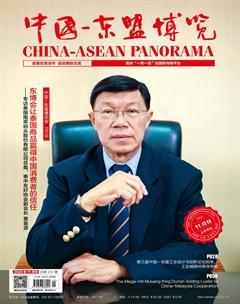泰国:疫情防控取得积极成效
黄利霞

泰國作为全球新冠肺炎疫情暴发以来,最早报告新冠肺炎确诊病例的国家之一,从2020年1月13日确诊第1例至今,这一人口近7000万的国家累计确诊新冠肺炎病例只有3759例,死亡59人,确诊病例数在全球200多个国家和地区中位列140名开外。根据全球184个国家疫情复苏指数(Ranking of Countries by Recovery Index)调查报告显示,泰国位列全球疫情复苏最快国家第二名,并位列亚洲国家和地区榜首。世界卫生组织将泰国列为成功抗疫的典范之一,成为其他国家学习的榜样。
文化与公卫体系成防疫法宝
早在2020年1月,一接到世界卫生组织有关新冠病毒的疫情通报,泰国就在主要国际机场口岸加强体温监测,以提早发现疑似病患。1月8日,泰国卫生部门监测到了中国以外的首例疑似病例,1月13日,病例确诊。对于到达机场的乘客,泰国医疗体系的工作人员最初要对其监测体温,必要时隔离,后来每一位抵泰乘客都要求隔离。
泰国成功遏制了新冠疫情的传播,这还要归功于其国内健全的医疗体系和积极的公共合作。泰国外交部表示,泰国抗疫有成,其乡村医疗志愿者功不可没。超过100万名乡村医疗志愿者在抗疫后方做了大量工作,他们协助政府进行登记、跟踪疑似病例,为村民进行病症初断并提供药物,帮助村民就诊,在村民与专业医护人员之间架起一座桥梁,有效地将公共卫生系统扩展到全国各个偏远地区。
泰国是发展中国家,但医疗水平却居于世界前列。泰国是率先攻克新冠病毒基因密码、分离出毒株的少数国家之一。泰国自行生产的首个新冠疫苗预计将在明年年中面市,泰国也将成为东盟地区第一个可以生产新冠疫苗的国家。
保持社交距离、佩戴口罩被视为抗击疫情的有效武器。而泰国人民问候的礼仪与佩戴口罩的习惯成为了防疫方面良好的“先天条件”。泰国人在彼此问候时,既不握手、拥抱,也不亲吻面颊,而是双手合十,头前倾,略作鞠躬状,履行被称为“Wai”的双手合十礼,避免不必要的身体接触。有研究称,疫情期间,95%的泰国民众在公共场合佩戴口罩,这一比例在东南亚国家中居于首位。
防疫和拯救经济的博弈
2020年10月21日,泰国新冠肺炎疫情管理中心宣布,再次延长紧急状态法至11月底,与此同时,来自低风险地区的亚太经合组织商务旅行卡持有人将被允许入境,这些地区包括中国、新加坡、马来西亚等。这是自2020年3月以来,泰国政府第7次宣布延长紧急状态法。
泰国从3月份起实施《紧急状态法》,4月初又实行了“封城”“宵禁”等防疫措施。随着疫情得到控制,泰国新冠肺炎疫情管理中心会议决定,6月15日起取消全国宵禁,同时实施第四阶段解禁措施。7月1日起,泰国全面恢复国内商业和娱乐活动、学校重启。在每一阶段解禁前,泰国政府都会对当下的疫情态势进行为期两周的仔细观察和评估,以确保新一轮的疫情不会暴发。
泰国分阶段实行解封措施后,社会生活逐步恢复正常,但防控之弦仍紧。泰国政府仍鼓励民众戴口罩和保持社交距离。在曼谷街边,人们在餐馆用餐时,一桌两人之间会竖起塑料防护屏。学校里,学生的课桌四周也会立起透明的保护屏障。到商场或饭店时,顾客要扫码登记,便于卫生部门查找活动轨迹。
在新冠肺炎疫情期间,泰国受影响最大的行业为旅游业、零售业、餐饮业、航空业、国际物流业等服务型行业。在目前疫情好转的情况下,泰国的零售业、餐饮业、国际物流业也已经基本开放,但旅游业和航空业仍然处于评估开放过程中。
旅游业作为泰国经济的重要支撑,为进一步提振旅游业,泰国政府出台预算总额224亿泰铢(1美元约合31泰铢)的计划,通过政府补贴的方式鼓励泰国民众国内游,取得明显效果。目前,通过该计划预订的酒店数量已超过80万间。近日,该计划迎来“升级版”,每位泰国国内旅客四折住酒店的时长从5晚增加到10晚,航班补贴从每人1000泰铢翻倍为2000泰铢。
此外,泰国还有条件地开放国门。10月20日,泰国曼谷素万那普机场迎来首批中国游客,这批游客获得了泰国政府制定的“特殊旅游签证”,这是自7个月前泰国禁止普通游客入境以来,该国迎来的首批此类旅客入境,也是泰国为恢复受新冠疫情打击的旅游业迈出的一小步。
尽管目前全球新冠疫情形势依然严峻,泰国经济复苏的任务十分急迫和艰巨,但泰国政府出台的各项政策始终将防控放在第一位,扎实做好各项防控工作,努力降低疫情对经济的冲击。泰国在防疫道路上取得的积极成效值得其他国家借鉴。
Asias emerging economies are at different stages in combatting the COVID-19 pandemic. For some countries, the light at the end of the tunnel is getting brighter as social distancing measures are being eased and economic activity is starting to ramp up again. Others are still grappling with outbreaks and lockdowns.
Whatever stage they are at, though, these markets must also continue to think beyond the crisis, and about what can be done to safeguard and improve their long-term economic prospects. Developing nations across Asia — Indonesia included — have of course not been immune to the social and economic disruption caused by the COVID-19.
Travel restrictions and distancing measures have hit trade and jobs around the globe. Budget deficits have widened and overall levels of debt will continue to increase across much of the region. Any recovery in tourism and business and consumer confidence is likely to be overshadowed by lingering concerns about potential new outbreaks, and by the tough global economic backdrop.
Despite the near term challenges, its important to remember the underlying trends that underpin many developing nations long-term growth potential.
For one thing, most emerging Asia enjoy favorable demographics, with under-20-year-olds accounting for more than one-third of the population of India, Bangladesh, and Southeast Asia, according to UN World Population Prospects 2019.
For another, the regions economies are increasingly capable of delivering innovation and higher-end manufacturing and services. The emergence of numerous home-grown E-commerce, E-payments, and other companies testifies to this.
The COVID-19 fall-out could, if anything, boost the quest for new ideas and technologies, as households, companies and entrepreneurs seek out new ways of buying, selling, banking, learning, and communicating with each other.
Its also important to remember that emerging Asian economies are, broadly speaking, now more resilient to external financial shocks than during the 1997-1998 Asian financial crisis or the global 2008 global financial crisis. Foreign exchange reserves have risen. External debt levels have come down. Current account balances have improved.
And as the 2020 crisis picked up steam, governments and central banks were quick to provide assistance with interest rate cuts and a slew of fiscal, liquidity and other measures to support households and businesses.
In May, President Joko Widodo announced that the government would begin to ease widespread social distancing measures and enter a more sustainable phase of social restrictions. As an intervention to stabilize the economy, fiscal stimulus measures were announced to support healthcare provision and economic recovery. Alongside this, the government pledged to offer more social welfare support for pandemic-impacted low-income communities.
Still, with COVID-related obstacles set to linger, policy makers would do well to supplement their immediate economic support measures with bold steps aimed at increasing their economies attractiveness as places to invest and do business in.
There are three broad areas of focus.
First, improving the local operating environment — making it easier to do business. That spans everything from reducing red tape and corruption, to dialing back restrictions on incoming investment, and labor market reforms, for example. Many countries have made laudable progress on these fronts — building on this will stand them in good stead.
Second, boosting competitiveness and productivity through investment. Specifically in transport and energy infrastructure, telecoms and internet connectivity, healthcare, education and smart, low-carbon ways to manage urbanization. All will be key to bolstering developing economies long-term growth prospects, and to dealing with technological advances such as robotics and automation, 3D printing and Artificial Intelligence (see Asian Development Outlook 2018). Building infrastructure well from the outset — and building back better after each upset or crisis — is crucial to each economys long-term growth and resilience.
Linked to this is the third area, of climate change preparedness. Southeast Asian and South Asian nations are particularly vulnerable to the effects of climate change, with low-lying megacities like Dhaka, Ho Chi Minh City, Jakarta, Bangkok, and Mumbai highly susceptible to storms and sea level rises.
Increasingly, a countrys or regions ability to withstand climate-linked threats — including the ability to raise and direct funding intelligently towards greening and climate-proofing the local economy — will be a factor in where companies and investors direct their business.
The COVID-19 pandemic has taken a human and economic toll that was unimaginable just months ago. Its impact will linger for months, if not years. But like every crisis, it also represents an opportunity for policy makers and business communities to rethink and accelerate their reform agendas. Those that grasp the opportunity could not just move their economies to the proverbial light at the end of the tunnel, but bolster their solid fundamentals for the world well beyond it.
· Source: The Jakarta Post

